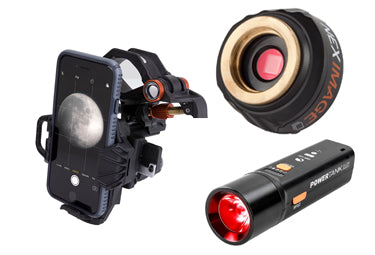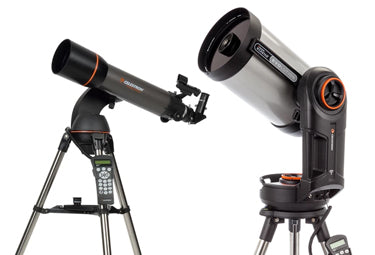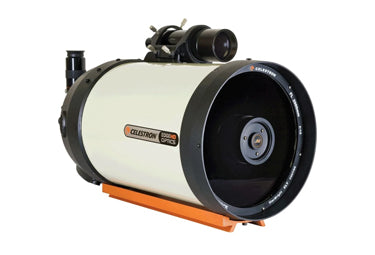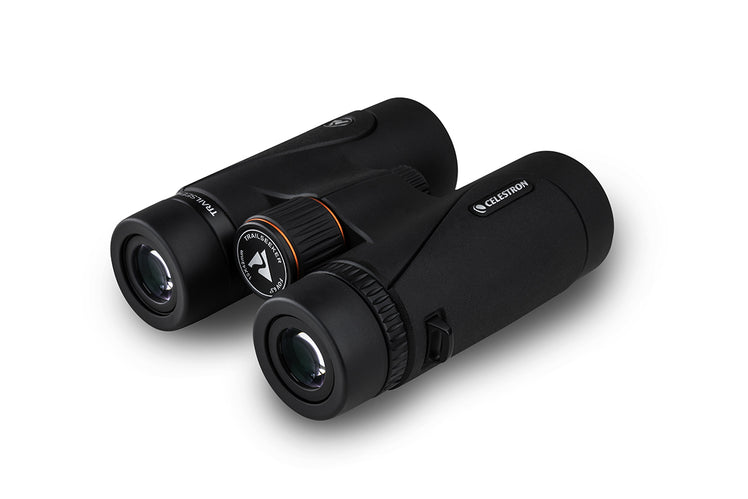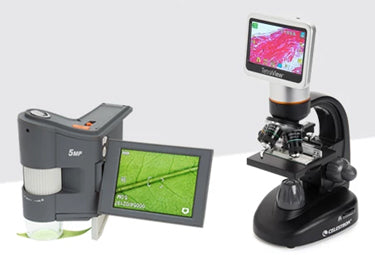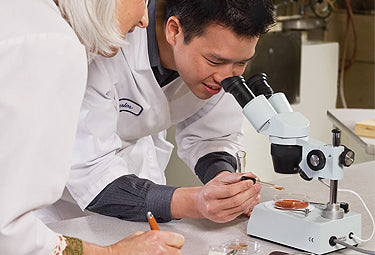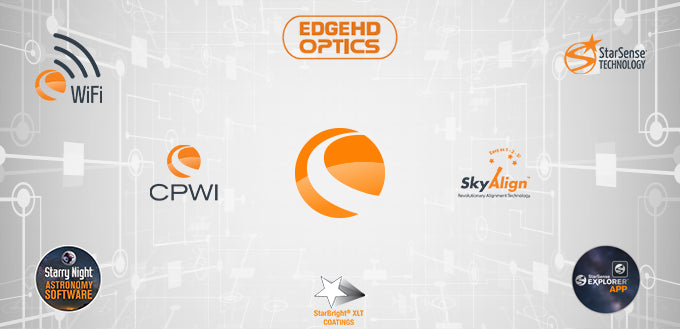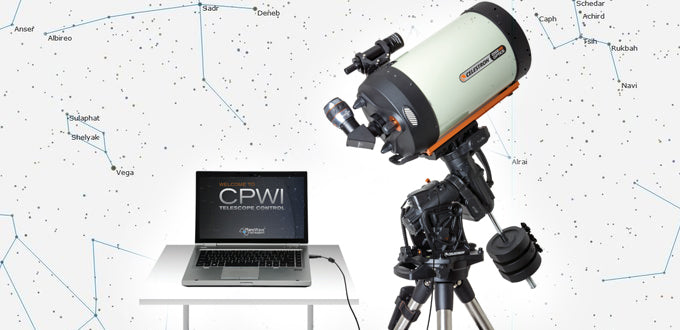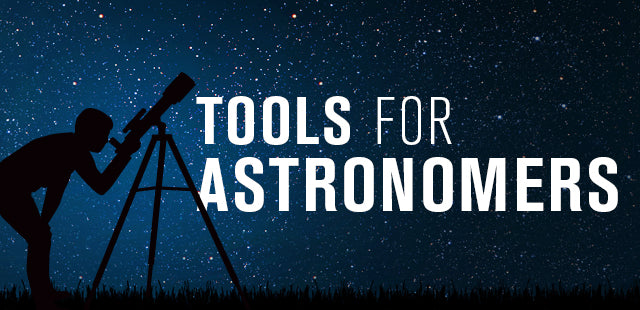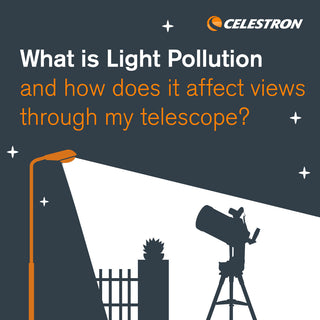The Ultimate Guide to Observing Venus
August 6, 2020

Between Earth and the Sun orbits Venus—our brilliant sister planet, cloaked in clouds and steeped in mystery. Venus regularly dazzles observers with its stunning white glow as the “Morning Star” or “Evening Star,” depending on its place in the sky. Its radiant light has sparked centuries of wonder, often mistaken for a UFO, a guiding star, or an omen. Fittingly, the ancients named it for the Roman goddess of love and beauty.
This guide will help you understand Venus and why it remains one of the most eye-catching and accessible targets for amateur astronomers of all skill levels. Below are the key dates for 2025 (greatest elongations, conjunctions, and phases), followed by observing tips, recommended gear, and fascinating facts about this extraordinary world.
Why Observe Venus?
You’ve likely seen Venus many times, whether you realized it or not. Hanging like a brilliant white lantern low on the horizon, Venus has captivated observers for centuries, shining as the third-brightest object in the sky after the Sun and Moon.
Often called Earth’s twin due to its similar size and mass, Venus is anything but hospitable. Its thick cloud cover traps heat in a runaway greenhouse effect, pushing surface temperatures to nearly 900°F (475°C)—hot enough to melt lead.
It’s this cloud cover that makes Venus such an intriguing target for amateur astronomers. Sunlight bounces off the thick sulfuric acid clouds, giving Venus extraordinary brightness and predictable appearances. It can shine as bright as magnitude -4.7, about 17 times brighter than Sirius, the brightest star in the night sky.
Through a telescope, Venus offers a dramatic display of phases, much like the Moon’s. It waxes and wanes as it swings around the Sun—largest and brightest when crescent, smallest and nearly full when farthest from Earth. While the clouds obscure all of Venus’ surface features from view, the changing phases provide a visually rewarding experience, especially for beginners learning to track planetary motion.
How to Observe Venus Safely
Although Venus is one of the brightest and easiest planets to spot, safety is essential when observing it, especially because of its proximity to the Sun in the sky.
As Venus orbits the Sun, it reaches several key positions relative to Earth:
- Inferior conjunction – Venus is directly between Earth and the Sun.
- Greatest western elongation – Venus is farthest from the Sun in the morning sky.
- Superior conjunction – Venus is on the far side of the Sun, from Earth’s perspective.
- Greatest eastern elongation – Venus is farthest from the Sun in the evening sky.

Never attempt to observe Venus near inferior or superior conjunction. During these times, the planet appears close to the Sun in the sky, and using binoculars or a telescope can accidentally direct sunlight into your eyes—a serious risk that can cause permanent vision damage. It is never worth the risk.
Instead, observe Venus safely during its greatest elongations, when it's at a wide angle from the Sun and visible before sunrise or after sunset. These are the best—and safest—times to enjoy views of the planet’s phases. Some experienced observers are even able to spot Venus in broad daylight near elongation. Only attempt this with the supervision of an advanced amateur astronomer and ensure the Sun is completely blocked from your view.

The Best Equipment for Viewing Venus
Your Eyes
Venus is often visible without any optical aid, even during twilight. Its sheer brightness makes it one of the most striking objects in the sky.
Binoculars
Using binoculars can enhance your view of Venus' glow and make it easier to locate during the day or in twilight.
Telescopes
A telescope with 60mm (2.4") aperture or greater and at least 50x magnification will allow you to see the phases of Venus. Larger apertures and longer focal lengths improve image scale and brightness.
Telescopes with GoTo and tracking mounts will keep Venus centered for easier viewing. Manual telescopes are just fine, too—make small, frequent adjustments to keep the planet centered as it appears to drift across the sky.
Filters
Venus is very bright, so astronomical filters are extremely useful for cutting glare and improving contrast:
- Moon Filter or Variable Polarizing Filter – Reduces brightness and eye strain
- Colored Filters – Enhance contrast in the planet’s cloud tops, though details remain subtle due to Venus’s uniform atmosphere

Cameras and Phone Adapters
Capturing Venus on camera has never been more accessible. There’s a camera setup for every skill level and budget. Below are the three most popular options—smartphones, DSLRs, and dedicated planetary cameras—along with basic steps and recommended accessories for each:
- Capturing Venus with your Smartphone – You can try holding your smartphone to your telescope’s eyepiece and capturing a shot. But because of the small image scale, it can be challenging to align your phone’s camera with the eyepiece. Instead, try adding a smartphone adapter like the Basic Smartphone Adapter or NexYZ 3-Axis for stability. These simple devices clamp onto the telescope’s eyepiece and allow you to precisely line up your shot. Once you’ve centered Venus, you can use your phone’s digital zoom to enlarge it for more impact.
- Capturing Venus with your DSLR Camera – Using a DSLR camera is another easy way to capture images of Venus through your telescope. You just need two very inexpensive pieces of equipment to make it happen: a T-Adapter (which comes in various models depending on your telescope’s design) and a camera-specific T-ring (made for Canon, Nikon, or other brands). First, attach the T-ring to your DSLR camera’s lens mount just like you would a normal lens. Then, thread the T-Adapter onto the T-ring. Finally, attach the T-Adapter assembly to your telescope’s focuser or rear cell. Now, with your DSLR at the telescope’s prime focus, you’ve essentially turned your telescope into a massive telephoto lens, allowing you to record images of Venus’ phases and clouds.
- Capturing Venus with a Planetary Camera - For those seeking higher magnification and detail, a dedicated planetary imaging camera is an excellent choice. These specialized cameras replace the telescope’s eyepiece, sending a live video feed directly to your computer via USB. Planetary imaging software then analyzes each frame of video, filters out frames distorted by atmospheric turbulence, and stacks the clearest images to create a single, crisp composite. Celestron’s NexImage 5 and NexImage 20 are an affordable, high-quality camera that can deliver impressive results.
Product Recommendations
What to Look for While Observing Venus
Phases
Venus goes through a full set of phases, just like our Moon, as it orbits the Sun. These phases are easily visible through a telescope with moderate magnification. Interestingly, Venus appears brighter and larger during its crescent phases than when it is nearly full. That’s because it’s much closer to Earth during these times, offering a larger apparent size despite reflecting less sunlight overall.

Cloud Features
Aside from its striking phases, Venus has very little to reveal in terms of surface detail. Its dense atmosphere, composed primarily of sulfur dioxide, forms a thick, reflective cloud layer that permanently obscures the planet’s surface. Unlike the dynamic bands and storms of Jupiter or Saturn, Venus’s cloud cover is relatively uniform and stable. Any atmospheric markings or variations will be extremely subtle and difficult to detect.
Transits
One particularly rare and memorable event occurred in 2012, when Venus transited the face of the Sun. During this event, Venus appeared as a small black dot crossing the solar disk—a phenomenon known as a Transit of Venus. These transits are among the rarest predictable celestial events; the next one won’t occur until 2117. Anyone lucky enough to witness the 2012 transit saw a truly historic spectacle. Perhaps a young skywatcher today will be fortunate enough to see the next one in their lifetime.

Helpful Observing Hints
-
Choose Nights with Steady Seeing Conditions
Venus is bright enough to cut through light pollution, but for the sharpest views of its crescent phases, stability matters.
- Avoid nights when stars twinkle rapidly—this indicates poor atmospheric seeing.
- Begin with low magnification and increase gradually if the image stays sharp.
- Early morning (before sunrise) typically offers calmer, steadier air than evenings.
-
Cool Your Telescope Down
Let your telescope sit outside for about an hour before observing so it can match the outdoor temperature. This helps reduce heat shimmer from the optics and improves image sharpness. -
Collimate Your Telescope
If you’re using a Newtonian or Schmidt-Cassegrain telescope, check that the optics are properly aligned. Even slight misalignment can soften planetary detail and reduce contrast. -
Observe Often
Venus’ phase changes happen gradually over weeks. Observe frequently and you’ll see it grow and shrink in apparent size while transitioning through crescent, half, and gibbous phases—an engaging long-term observing project.
-
Choose Nights with Steady Seeing Conditions
Venus is bright enough to cut through light pollution, but for the sharpest views of its crescent phases, stability matters.
- Avoid nights when stars twinkle rapidly—this indicates poor atmospheric seeing.
- Begin with low magnification and increase gradually if the image stays sharp.
- Early morning (before sunrise) typically offers calmer, steadier air than evenings.
-
Cool Your Telescope Down
Let your telescope sit outside for about an hour before observing so it can match the outdoor temperature. This helps reduce heat shimmer from the optics and improves image sharpness. -
Collimate Your Telescope
If you’re using a Newtonian or Schmidt-Cassegrain telescope, check that the optics are properly aligned. Even slight misalignment can soften planetary detail and reduce contrast. -
Observe Often
Venus’ phase changes happen gradually over weeks. Observe frequently and you’ll see it grow and shrink in apparent size while transitioning through crescent, half, and gibbous phases—an engaging long-term observing project.
Interesting Facts About Venus
-
A Mysterious Twin
Venus is similar in size and mass to Earth, earning it the nickname “Earth’s twin.” But its surface conditions are drastically different: intense pressure, extreme heat, and corrosive clouds. -
Hottest Planet in the Solar System
Despite being farther from the Sun than Mercury, Venus is hotter—its surface temperatures reach up to 900°F (475°C) due to a runaway greenhouse effect in its dense atmosphere. -
Retrograde Rotation
Venus spins in the opposite direction to most planets in the Solar System. If you stood on Venus, the Sun would appear to rise in the west and set in the east. -
A Slow Day, A Short Year
One day on Venus (one full rotation) lasts 243 Earth days—longer than its 225-day year. -
Crushing Atmosphere
The atmospheric pressure on Venus is about 92 times that of Earth’s—roughly equivalent to the pressure found 3,000 feet (900 meters) underwater. -
Clouds and Composition
Venus’s clouds are made primarily of sulfuric acid droplets. These highly reflective clouds make Venus the most reflective planet in the Solar System. -
Volcanic Landscape
Venus is home to thousands of volcanoes, including Maxwell Montes—the planet’s tallest mountain—and vast lava plains. Some evidence suggests Venus may still be volcanically active today.
Human Exploration and the Future of Venus
Since the 1960s, several robotic spacecraft have visited Venus, including Mariner 2, Venera 7 (the first spacecraft to land on another planet), Magellan, and Akatsuki. These missions have mapped its surface with radar, analyzed its atmosphere, and studied its harsh climate.
Now, interest in Venus is surging again. NASA’s upcoming VERITAS and DAVINCI missions, along with ESA’s EnVision, aim to unravel Venus’s geological history, climate evolution, and possible signs of ancient oceans or even microbial life in its upper atmosphere.
Will Venus yield answers about Earth’s future or offer new insight into planetary habitability? Only time will tell. Until then, enjoy the brilliant beauty of Venus, rising high before dawn or shining brightly after sunset, under clear skies.
Clear skies!
Other articles you might be interested in: Ultimate Guide to Observing the Universe

